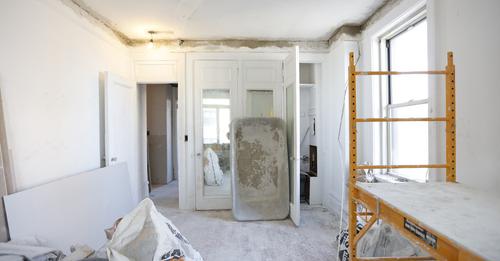We’ve written about the mortgage loan approval process in the past. Today, we’ll be focusing on one specific part of that process to answer a reader’s question. A reader asked: What happens after mortgage pre-approval?
Let’s start with a quick definition, just to put this into context.
During the mortgage pre-approval process, your lender will review your financial situation to determine (A) if you are qualified for a home loan and (B) how much they are willing to lend to you. You can think of it as a kind pre-screening process for loan applicants.
Pre-approval usually happens on the front end of the home buying process. For some people, it’s the very first step — and with good reason. Which brings us back to the question at hand. What happens next?
8 Things That Happen After Pre-Approval
To understand what happens after pre-approval, it’s helpful to break it up into two categories — house hunting and mortgage processing. There are certain house hunting steps that take place after you get pre-approved for a loan. There are also some additional steps to the mortgage process, such as the all-important underwriting stage.
On the House-Hunting Side
First, let’s look at some of the house hunting and negotiating steps that take place after the pre-approval process has been completed.
1. Finding a real estate agent
It’s common for home buyers to find a real estate agent after getting pre-approved by a lender. Some agents are reluctant to spend a lot of time on a potential client who hasn’t been evaluated by a mortgage lender yet. On the other hand, agents will be more enthusiastic and willing to help you if you’ve successfully cleared the mortgage pre-approval hurdle.
Related: Should I get an agent first?
2. House hunting / home search
House hunting is one of the next steps that happen after your mortgage pre-approval. This is when you actually go out and view homes to find one that meets your needs.
It makes sense to start your home search after mortgage pre-approval, because you’ll have a better idea of your price range. You can then narrow your search accordingly. After all, there’s no point in looking at homes that are way beyond your budget.
Related: When to start looking at houses
3. Making an offer
This is another important step that happens after mortgage pre-approval. Once you’ve found a home that meets your needs, it’s time to put an offer on paper. Your real estate agent can help with this process.
The most important thing is to evaluate the seller’s asking price, to make sure it’s reasonable. You can do this by looking at similar homes that have sold recently in the same area. This is what real estate agents refer to as comparable sales, or “comps.”
Related: Mortgage first, offer second
4. Signing a purchase agreement
Once the home buyer and seller have come to an agreement on the sale price and other details of the transaction, they’ll sign a purchase agreement. This is also referred to as the real estate contract.
The purchase agreement is usually finalized after mortgage pre-approval, house hunting, and the other steps mentioned above. With a signed purchase agreement, you can then go back to your lender to complete the mortgage process. So let’s talk about that process next.
Mortgage Steps That Follow Pre-Approval
We’ve discussed what happens after mortgage pre-approval, on the house hunting and offer side of things. Let’s switch gears now and talk about some of the mortgage-related steps that occur after you’ve been pre-approved for a loan.
1. Submitting additional documents
You probably had to submit quite a few documents to your lender during the application and pre-approval stage. Chances are, you’ll have to submit additional documents once you have found a home and made an offer.
For one thing, you’ll have to provide a signed copy of the purchase agreement, for home appraisal purposes. The lender might also request additional documents or letters of explanation during the underwriting stage (see below).
2. Mortgage underwriting
From a borrower’s standpoint, underwriting is one of the most important stages of the home loan process that happens after pre-approval. We’ve written about the underwriting process elsewhere on the site. Here’s the short version:
It is the underwriter’s job to make sure the borrower, the paperwork, and even the property itself meet all required guidelines. Some guidelines are imposed by secondary authorities, like the Federal Housing Administration or Freddie Mac. Other requirements can be imposed by the lender itself.
The underwriter will closely review all of the paperwork and may request additional documentation or input from the borrower.
3. Resolving ‘conditions’ (in some cases)
Sometime after pre-approval, your mortgage lender might issue what’s known as a conditional approval. This is a situation where the loan is expected to go through, but the underwriter (or someone else within the organization) needs additional information to sign off on it.
For example, the underwriter might ask you to provide a letter of explanation for a certain bank transaction. You would then supply the requested information to move the loan toward closing.
Or, you might clear the underwriting stage with no issues whatsoever. It varies.
4. Closing the deal
From a borrower’s perspective, closing represents the final step in the mortgage loan process. In most cases, the overall process begins with pre-approval and ends at the closing.
When you “close” on a home loan, you will review and sign a lot of paperwork. This is also when home buyers have to pay their closing costs, usually in the form of a cashier’s check or wire transfer.
Tips for Keeping Things on Track
As a home buyer and borrower, it’s important to understand that your loan could still be denied even after your mortgage pre-approval.
Getting pre-approved is a helpful step in the process, and we generally recommend it. But it’s not a guarantee that your funding will go through. As we talked about above, there is still an underwriting process to get through.
After mortgage pre-approval, you can keep things on track by avoiding any major financial transactions that might affect your mortgage qualification. The ideal scenario is to keep your financial situation as stable and “static” as possible.
If you were to switch jobs, take out a personal loan, or withdraw a bunch of money from the bank, it could send your loan off the rails. At the very least, it will probably require some additional paperwork hurdles.
At this stage in the process, everyone wants the same thing. They want the deal to go through. This is true for the buyer, the seller, and the mortgage company. So it’s important for everyone to work together and keep the communication flowing.
As a borrower, you’ll want to keep in touch with your loan officer (or whoever is managing your loan process.) Make sure they have all the information they need. If you receive requests for additional information, such as a letter of explanation, address them as quickly as possible. This will help you reach the finish line and prevent unwanted delays.
Disclaimer: This article explains what happens after mortgage pre-approval, from a home buyer’s perspective. The mortgage process can vary from one borrower to the next for a number of reasons. Because of this, some portions of this article may not apply to your particular situation. This article is provided for educational purposes and is intended for a general audience.
Brandon Cornett
Brandon Cornett is a veteran real estate market analyst, reporter, and creator of the Home Buying Institute. He has been covering the U.S. real estate market for more than 15 years. About the author
Reposted by KVCore
Article Link: https://homevalueplus.info/a/188731363?fbclid=IwAR2_gxpIhrpl2SkycB8-v6aJp_WeGWFb95OZggiMWXjYgvjZ1QKqj-Mkvso



